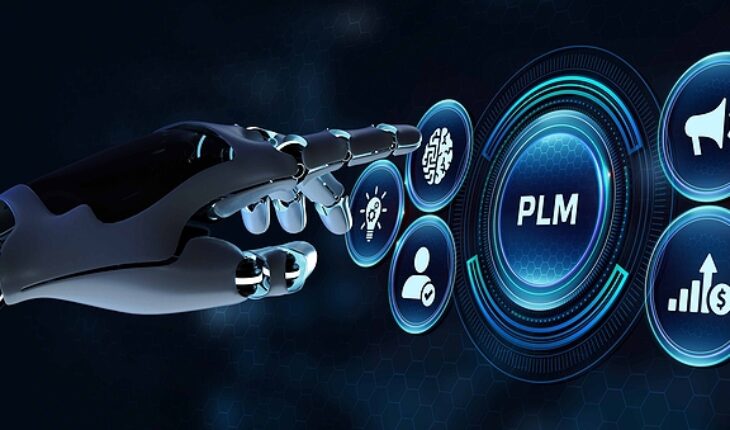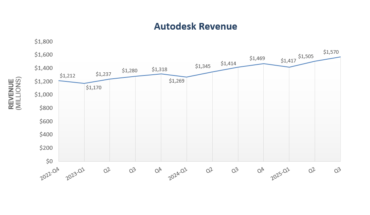The steady and rapid maturation of PLM and its various software solutions promises to improve digital transformation’s track record.
PLM’s maturation is currently being demonstrated by offering better insights into the data being evaluated, providing a better grasp and management of new processes being implemented, and making it easier for people to trust in the ultimate benefits of digital transformation.
I expect effective, enterprise-spanning collaboration to be front and center. Without that, no new product (or service or system) will succeed in the marketplace and/or with its users … or even get to market in the first place. This points to the criticality of people in digital transformation and why people are cited as a major cause of many digital transformation failures.
These failures, estimated at three-fourths of all digital transformation projects, are inevitable. As long as users and managers don’t understand Digital Transformation, they will not accept it and may even actively resist it. In what I see as a corollary to Murphy’s Law (the idea that “anything that can go wrong will”) when digital transformation efforts fail too often, they will stoke all-too-real fears that lead people to thwart further efforts.
There is nothing mysterious about digital transformation failures. They are caused by the same factors and lack of oversight that often leads to every other technology implementation failure. Any list of such failures will suffice, so I see no point in reiterating them here.
Assuring the successful implementation and adoption of any new technology (or system or process, for that matter) requires that users get comfortable with it and see how its use in their everyday jobs provides value. It’s that simple … and that complex!
The myriad changes and disruptions surging through the global economy make successful digital transformations increasingly urgent, CIMdata’s clients tell us. As the leading authority on Product Lifecycle Management (PLM) and its digital transformation, CIMdata provides research, education, and strategic consulting to clients around the world. This requires us to have our ears to the ground.
Before we get into what I see as being 2025’s key digital transformation drivers, we must be clear: What is Digital Transformation? While there are many definitions of digital transformation, CIMdata prefers Gartner’s: “…the use of digital technologies to change a business model and provide new revenue and value-producing opportunities; it is the process of moving to a digital business.”
At the end of this article, we will take a more comprehensive look at digital transformation and its impacts.
Now, on to 2025’s drivers.
The ongoing maturation of PLM technologies is Driver No. 1. By continually expanding capabilities for product design, development, analysis, and connectivity, PLM solution providers are helping pull operations technology (OT) and engineering technology (ET) closer together with powerful new tools that support and enhance an organization’s overall information technology (IT) landscape.
Enhancing PLM’s new capabilities are artificial intelligence (AI) as both Generative AI (GenAI) and Retrieval Augmented Generative (RAG AI) running on the powerful new computers they require. AI and this hardware are rapidly spreading through the global economy, and every day brings new announcements.
The growth of PLM and the new surge of interest in digital transformation have the same drivers. Every organization in the industrial and commercial world is under growing pressure to create products, develop services, and enhance and/or build/rebuild these systems on which success depends.
CIMdata clients, among the world’s largest companies, tell us they are subject to the same drivers. This is especially true of the huge aerospace, defense, and transportation corporations, and the builders of the production systems on which they depend. They pioneered the use of PLM-enabling technology in the mid-to-late 1980s to support complex products and systems with service lives measured in decades.
Industrial consolidations and acquisitions are Driver No. 2. They combine multiple PLM implementations that differ widely in source, age, and extent of use. They must be made to work together (i.e., they must be “harmonized”), usually with extensive modifications, many of which result in PLM implementation revisions and enhancements that are part of its maturation.
Accompanying and often driving these consolidations and acquisitions are staffing shortages, adding to the pressure to simplify, speed up, and broaden access to data. This access fosters more effective collaboration, which is essential for developing a steady stream of competitive and profitable offerings in every marketplace.
In addition, digital transformation “upskills” every job and task it touches. The need for new skills must be clearly understood and acted upon.
Industrial consolidations and expansions may accelerate yet again as the U.S. Department of Defense continues to drive its Digital Engineering initiatives, adding pressure for digital transformation throughout its vast supply chains. Additionally, new domestic policies may step up the “reshoring” of manufacturing, which is already underway in many other countries. As a result, companies that have failed with digital transformation may be incentivized to try again.
Fortunately, as PLM matures, the time lags between advances in PLM capabilities and their comprehension and adoption are shrinking. However, while this is Driver No. 3, I still don’t see comprehension and adoption growing fast enough to keep up with Driver No. 2.
Still needed is a better understanding of processes as they are actually used, a deeper appreciation of the benefits of newly available technologies, and redoubled efforts to get “people” to look up from their day-to-day tasks and see what is happening all around them. Ultimately, they must recognize the growing knowledge gaps in their part of the business.
Knowledge gaps mean people: users, implementers, managers, and leadership. Digital transformation will fail again unless “people” are:
• Relieved of fears of retribution if they point out difficulties
• Eased out of any temptation to disrupt the transformation
• Made to see that user buy-in is essential, not just for success but for survival.
This employee buy-in and its corresponding user empowerment are also strategic to Digital Transformation. Hopefully, this surprises no one.
Talk to the “people” singly and in groups about what they like and dislike about progress and personal expectations. Find out why they feel the way they do, then help them to see how one more failure, even a small one, will hurt everyone.
For 2025 and Beyond
From my perspective, it seems that everything in the digital world has become “strategic,” i.e., every change is critical and fosters more change. Looking at this objectively, I see that:
• Digital transformation is strategic for organizations to strive and then prosper.
• PLM is increasingly viewed as a core enabler of Digital Transformation for most
companies that design and deliver products and/or services to the market.
• A solid grasp of People, Processes, and Technologies is strategic to PLM.
Digital transformation presents a dramatic informational vision of an industrial and economic future that is accelerating right in front of us. Powerful new technologies, including enhanced PLM, are raising expectations across the entire organization. Common sense tells us these expectations should be consolidated into Key Performance Indicators (KPIs) and measurable return on investment (ROI) calculations that align with the organization’s business processes and its most promising expectations.
To conclude, the three drivers described above and mentioned below are the most prominent positive developments:
- The ongoing maturation of PLM’s capabilities
- Industrial consolidations and acquisitions with the resulting harmonization of multiple digital implementations
- Shrinkage of the digital knowledge gap
For 2025, taken together, these offer—and require—better insights into the new technologies being evaluated, providing a better grasp of new processes being implemented and making it easier for people to trust in the long-term benefits of Digital Transformation … ultimately with collaboration front and center.
So we ask again, what is digital transformation? Every firm in any digital business has its own definition. Here are three:
• Siemens Digital Industrial Software: “digital transformation is taking advantage of high-end computer systems and software to revolutionize the way products are developed, produced and optimized. Foundational to such a transformation are digital twins, virtual models that let engineers test and evaluate products and systems before building them, and digital threads, virtual connections between tasks and processes throughout the product lifecycle.”
• IBM: “Digital Transformation is a business strategy initiative that incorporates digital technology across all areas of an organization. It evaluates and modernizes an organization’s processes, products, operations and technology stack to enable continual, rapid, customer-driven innovation.”
• McKinsey & Co.: “Digital Transformation is the rewiring of an organization, with the goal of creating value by continuously deploying tech at scale. A clear digital transformation strategy focused on specific domains and enabled by a set of specific capabilities is critical for organizations to not only compete but survive. Digital transformation is not a one-and-done project; most executives will be on this journey for the rest of their careers.”
At the end of the day, I am convinced that every aspect of these definitions will accelerate in 2025 and the coming years.





